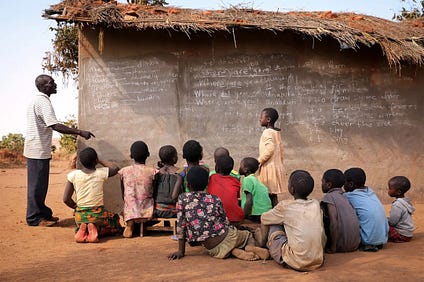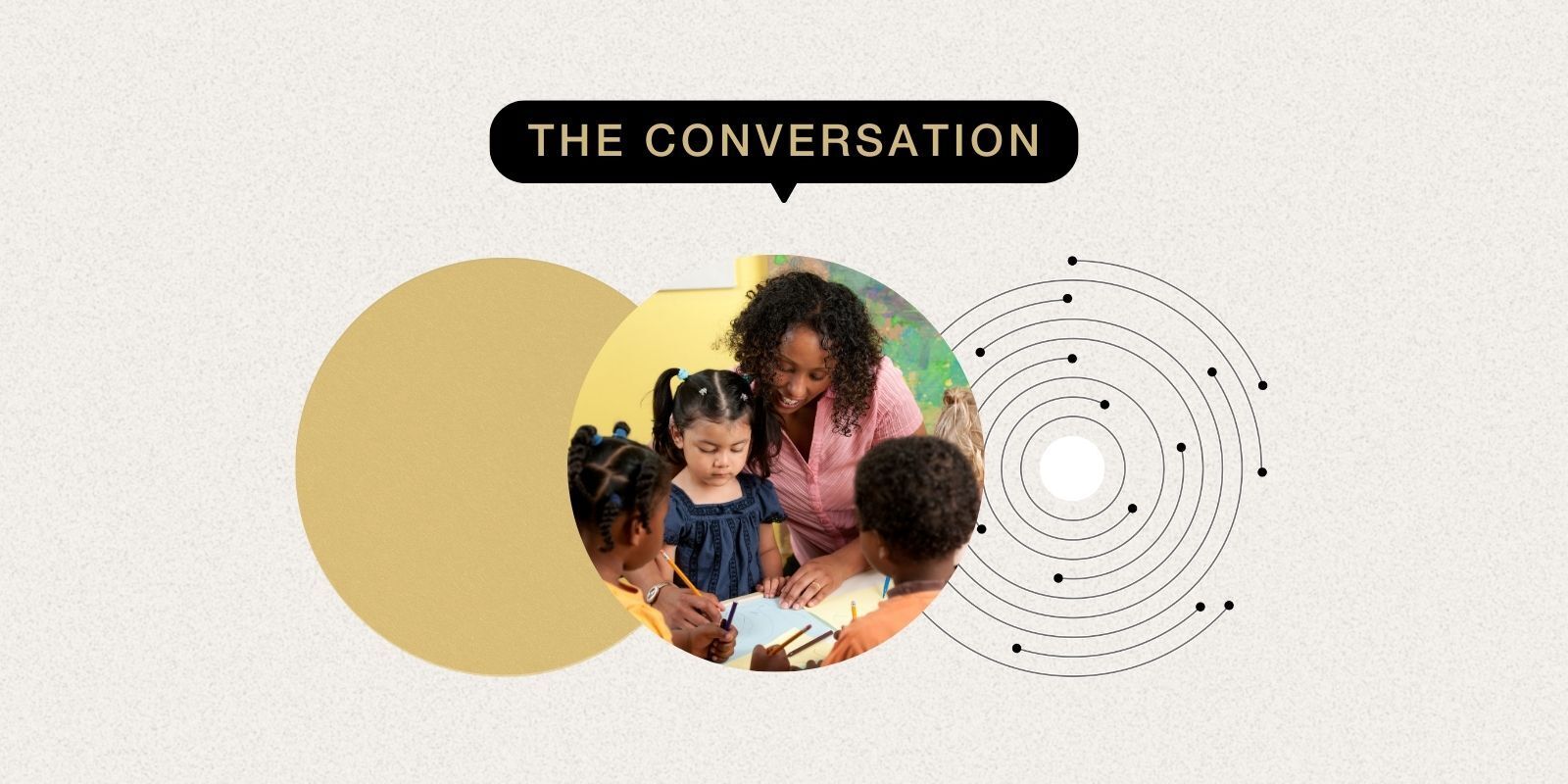SHOCKING: Only 4% of Malawian children achieve basic education, AU, UNESCO report – AfricaBrief

Report on Foundational Learning in Africa and Malawi: An SDG Perspective
Introduction: The Continental Challenge to SDG 4
A report titled “Lead for Foundational Learning,” produced by the African Union (AU), the African Centre for School Leadership, and the UNESCO Global Education Monitoring (GEM) Report, assesses the state of education quality across Africa. The findings present a significant challenge to the achievement of Sustainable Development Goal 4 (Quality Education).
- The report reveals that only one in ten children in Africa completes primary school with foundational literacy and numeracy skills, a critical barrier to achieving SDG Target 4.1, which aims for effective learning outcomes.
- In conjunction with the report, a new policy dashboard has been launched to map how African nations support foundational learning, providing a tool to monitor progress towards educational goals.
Case Study: Malawi’s Educational Landscape and SDG 4
The report provides a specific analysis of Malawi, where the challenges to achieving quality education are particularly acute.
- Only 4% of children in Malawi attain minimum learning proficiency by the end of primary school, indicating a substantial gap in meeting the objectives of SDG 4.
- Despite these outcomes, Malawi is recognized for its strong policy commitment to educational leadership. The country has implemented all six key leadership policies identified in the new dashboard, demonstrating a foundational commitment to improving educational governance.
- Localized success stories highlight that training school principals to focus on teaching quality and teacher motivation results in measurable improvements in student test scores, aligning with SDG Target 4.c on increasing the supply of qualified teachers and educators.
Structural Challenges to Achieving Quality Education in Malawi
While policy commitments are in place, the report identifies several structural weaknesses that impede the sustainable achievement of SDG 4 targets in Malawi.
- Lack of Legislative Integration: National competencies defining effective school leadership have not been formally embedded into law, making their implementation dependent on policy rather than legislation, which can weaken long-term impact.
- No Standardized Induction Process: There is no national policy to guide the induction of newly appointed principals, leaving them without structured preparation or mentorship for their complex roles.
- Absence of Performance Assessment: Malawi lacks a system-wide framework for assessing the performance of school leaders, which limits accountability, consistency, and the capacity for continuous improvement across the education system.
Socio-Economic Barriers: Inequities and Hunger (SDG 1, 2, 10)
The report underscores how socio-economic factors create significant barriers to equitable education, directly impacting multiple SDGs.
- Educational Inequality (SDG 10): Sharp inequities exist in primary school completion rates, with 77% of children from wealthy families completing their education compared to only 25% of children from the poorest families. This disparity directly contravenes SDG 10 (Reduced Inequalities).
- Gender and Poverty Disparities (SDG 4.5): Among the poorest children, completion rates are lower for boys (21%) than for girls (30%), highlighting complex gender dynamics within vulnerable populations that must be addressed to meet SDG 4.5.
- Hunger and Malnutrition (SDG 2): Hunger is a major barrier to learning. Although Malawi has a large school feeding programme, its sustainability is a concern as the government subsidizes less than 2% of the meals. This heavy reliance on donors poses a risk to achieving SDG 2 (Zero Hunger) and ensuring children are well-nourished and ready to learn.
Recommendations for Aligning with SDG 4 Targets
The report calls on governments to strengthen school leadership to accelerate progress towards quality education for all.
- Enhance Data-Driven Leadership: Empower school leaders to use data not just for administrative records but to monitor learning progress and identify students requiring targeted support.
- Develop Instructional Leaders: Select and train principals to be instructional leaders who can set clear learning goals, mentor teachers, and foster a culture of collaboration and accountability.
- Strengthen District-Level Support: Build the capacity of district education officers to interpret learning data, track progress, and ensure schools remain focused on improving teaching quality and student outcomes.
- Integrate Nutrition and Education Policies: Increase domestic funding for school feeding programmes to ensure sustainability and formally integrate nutrition policies within education planning, thereby addressing both SDG 2 and SDG 4.
Analysis of Sustainable Development Goals in the Article
1. Which SDGs are addressed or connected to the issues highlighted in the article?
The article discusses issues that are directly and indirectly connected to several Sustainable Development Goals (SDGs). The primary goals identified are:
- SDG 4: Quality Education: This is the central theme of the article. It focuses on the low quality of education in Africa, particularly in Malawi, as evidenced by the small percentage of children achieving basic literacy and numeracy skills. The article extensively discusses factors affecting educational quality, such as school leadership, teacher motivation, and the need for effective learning policies.
- SDG 2: Zero Hunger: The article explicitly links hunger and undernutrition to poor learning outcomes. It highlights Malawi’s school feeding program, its dependence on donors, and the fact that “Children cannot learn when they are hungry,” directly connecting nutrition to the educational crisis.
- SDG 10: Reduced Inequalities: The report underscores “sharp inequities in Malawi’s education outcomes.” It provides specific data showing vast disparities in primary school completion rates between children from wealthy and poor families, as well as gender-based differences within the poorest group, which are central to the goal of reducing inequalities.
2. What specific targets under those SDGs can be identified based on the article’s content?
Based on the issues raised, the following specific SDG targets are relevant:
-
Under SDG 4 (Quality Education):
- Target 4.1: By 2030, ensure that all girls and boys complete free, equitable and quality primary and secondary education leading to relevant and effective learning outcomes. The article’s focus on the low percentage of children (4% in Malawi) achieving “minimum learning proficiency” and the disparities in primary school completion rates directly addresses this target.
- Target 4.c: By 2030, substantially increase the supply of qualified teachers, including through international cooperation for teacher training in developing countries. The article’s emphasis on the critical role of well-trained and supported school principals as “instructional leaders” who mentor teachers and improve teaching quality aligns with the goal of enhancing the education workforce.
-
Under SDG 2 (Zero Hunger):
- Target 2.1: By 2030, end hunger and ensure access by all people… to safe, nutritious and sufficient food all year round. The discussion of Malawi’s school feeding program as a means to combat hunger among students directly relates to ensuring access to food for a vulnerable population.
- Target 2.2: By 2030, end all forms of malnutrition… The article identifies “undernutrition” as a major barrier to learning, connecting the issue to this target.
-
Under SDG 10 (Reduced Inequalities):
- Target 10.2: By 2030, empower and promote the social, economic and political inclusion of all, irrespective of… economic or other status. The stark contrast in school completion rates between wealthy (77%) and poor (25%) children highlights a lack of inclusion based on economic status, which this target aims to eliminate.
- Target 10.3: Ensure equal opportunity and reduce inequalities of outcome… The article’s data on differing educational outcomes for children based on their family’s wealth directly points to the inequalities of outcome that this target seeks to address.
3. Are there any indicators mentioned or implied in the article that can be used to measure progress towards the identified targets?
Yes, the article mentions several quantitative and qualitative indicators that can be used to measure progress:
-
For Target 4.1 (Quality Primary Education):
- Proficiency in Literacy and Numeracy: The article provides a direct indicator by stating that “just 4% of children reach minimum learning proficiency by the end of primary school” in Malawi. This aligns with official SDG indicator 4.1.1.
- Primary School Completion Rate: The article provides disaggregated data on completion rates, noting that “77% of children from wealthy families complete primary school, only 25% of the poorest do so.” This serves as a clear indicator of both overall completion and equity.
-
For Target 4.c (Qualified Teachers/Leaders):
- Existence of Leadership Training Policies: The article implies this as an indicator by stating that “only 19% of countries [in Africa] require principals to have prior training.”
- Implementation of National Competency Frameworks: The article notes that Malawi has developed these standards but has not “formally embedded [them] into law,” which serves as an indicator of policy implementation and enforcement.
-
For Targets 2.1 & 2.2 (End Hunger and Malnutrition):
- Coverage of School Feeding Programs: The article states that Malawi’s program reaches “about half of all primary school students,” providing a quantitative measure of the intervention’s reach.
- Domestic Funding for Nutrition Programs: The fact that “the government subsidises less than 2% of the meals served” is a critical indicator of the sustainability and national commitment to these programs.
-
For Targets 10.2 & 10.3 (Reduced Inequalities):
- Disparity in Education by Socioeconomic Status: The gap between the 77% completion rate for wealthy children and the 25% rate for poor children is a direct indicator of economic inequality in educational outcomes.
- Disparity by Gender within Socioeconomic Groups: The specific data comparing completion rates for “poor boys (21%)” and “poor girls (30%)” is an indicator of intersecting inequalities.
4. Summary of SDGs, Targets, and Indicators
| SDGs | Targets | Indicators |
|---|---|---|
| SDG 4: Quality Education |
4.1: Ensure all children complete free, equitable, and quality primary education with relevant learning outcomes.
4.c: Substantially increase the supply of qualified teachers and educational leaders. |
– Percentage of children achieving minimum learning proficiency by the end of primary school (4% in Malawi). – Primary school completion rate, disaggregated by wealth (77% for wealthy vs. 25% for poor). – Percentage of countries requiring prior training for school principals (19% in Africa). – Existence and legal status of national competency frameworks for school leadership. |
| SDG 2: Zero Hunger |
2.1: End hunger and ensure access to safe, nutritious, and sufficient food.
2.2: End all forms of malnutrition. |
– Percentage of primary school students reached by school feeding programs (about 50% in Malawi). – Percentage of school meal costs subsidized by the government (less than 2% in Malawi). – Prevalence of hunger and undernutrition as a barrier to learning. |
| SDG 10: Reduced Inequalities |
10.2: Empower and promote the social and economic inclusion of all, irrespective of economic status.
10.3: Ensure equal opportunity and reduce inequalities of outcome. |
– Disparity in primary school completion rates between the wealthiest and poorest children (77% vs. 25%). – Disparity in completion rates within the poorest group by gender (21% for boys vs. 30% for girls). |
Source: africabrief.substack.com
What is Your Reaction?
 Like
0
Like
0
 Dislike
0
Dislike
0
 Love
0
Love
0
 Funny
0
Funny
0
 Angry
0
Angry
0
 Sad
0
Sad
0
 Wow
0
Wow
0
















































:focal(1500,1000)/https://media.globalcitizen.org/a6/9a/a69a4720-d8a1-4715-b596-18738d03c05c/rotary_polio_hero_image.jpg?#)







/countries/sri-lanka/photo-credit---dmc-sri-lanka.tmb-1200v.jpg?sfvrsn=dc298bcc_1#)


















